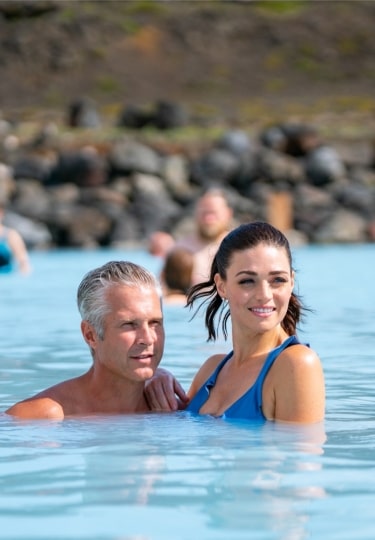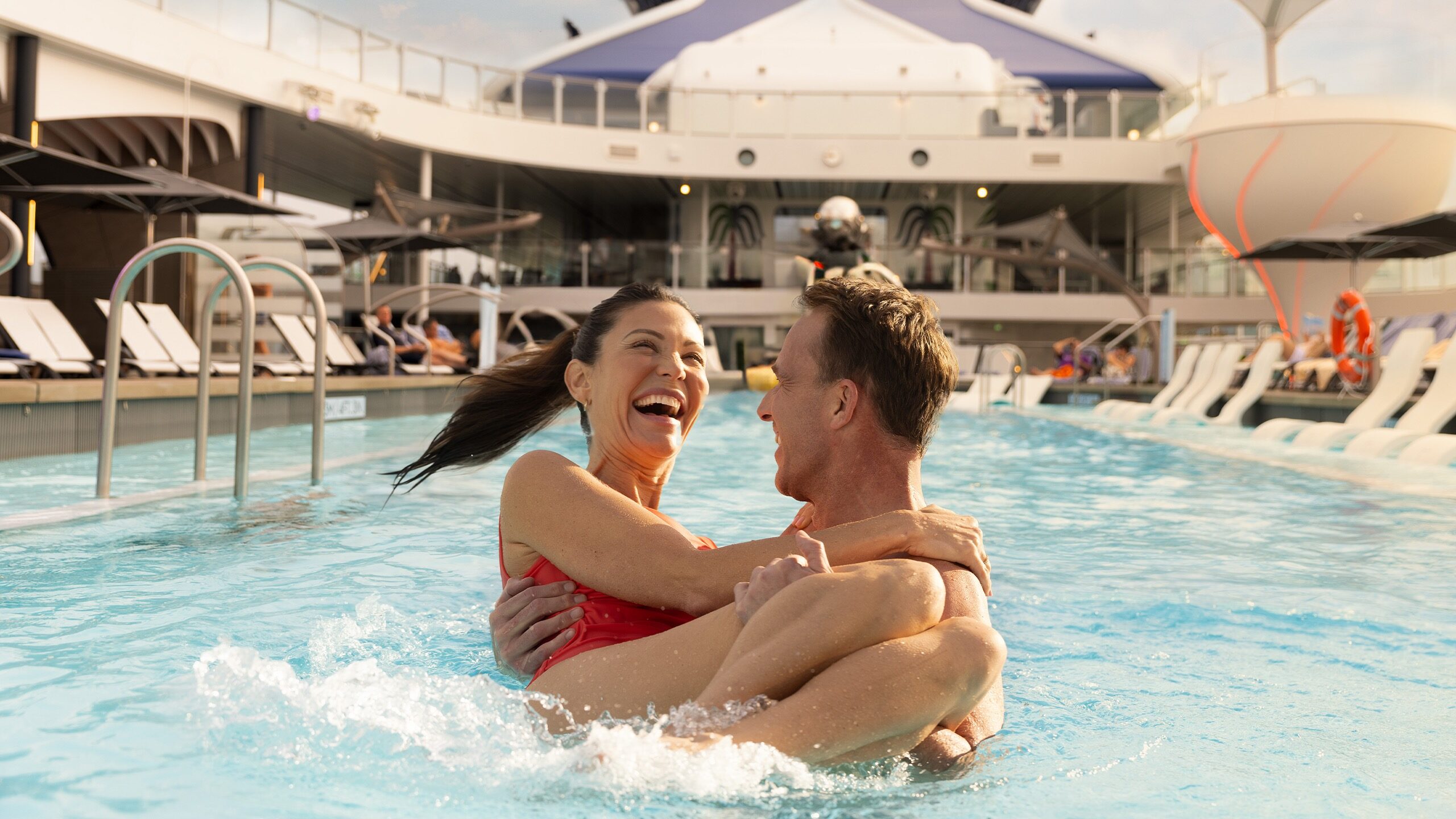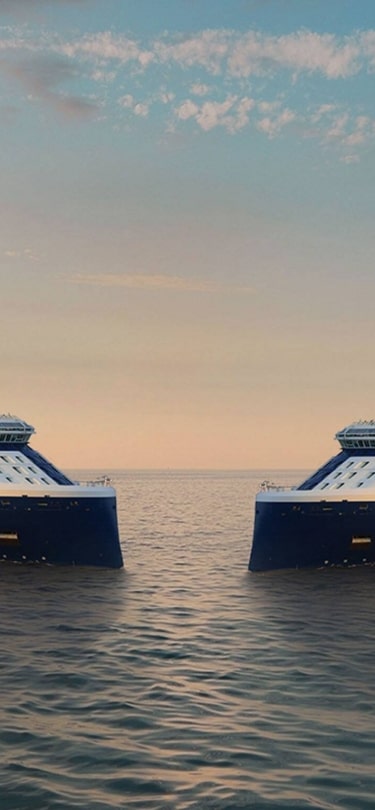Iceland in June is truly spectacular. During this late spring, early summer period, this North Atlantic island, on the edge of the Arctic Circle, is at its mildest and the landscape offers an abundance of outdoor activities, from hiking to kayaking.
You could explore the country’s thundering waterfalls, such as Gullfoss on the Golden Circle route, and Dynjandi, in the remote Westfjords. Nature is out in abundance, too, from wildflower meadows to nesting puffins on rugged sea cliffs.
From the places to visit and what you might see to what to expect from the weather, here’s everything you need to know about visiting Iceland in June.
Mild Weather
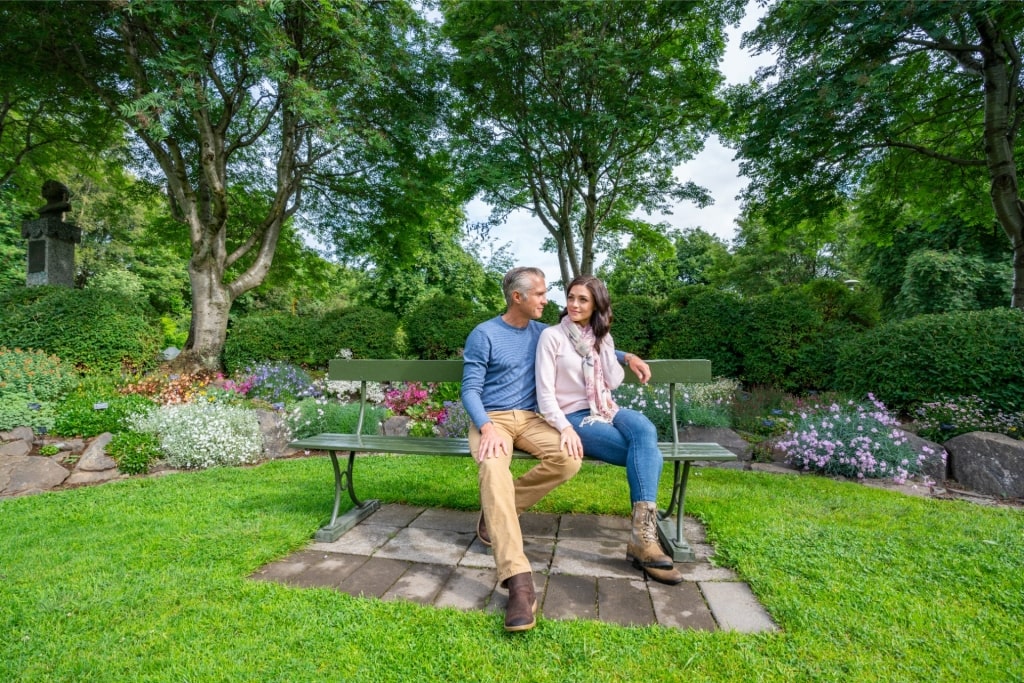
Akureyri
In June, the weather in Iceland is typically mild, with temperatures ranging from 48–59°F. Depending on your location, you might experience bright sunshine or cool, wet weather. Iceland is rarely hot, though it can experience the occasional warm spell.
If you’re wondering what to pack for a trip to Iceland, go for layers. Think T-shirts, loose-fitting shirts, cargo shorts, and pants. A waterproof jacket is essential, as are comfortable hiking or walking boots.
Sunglasses, a cap, or a sun hat are essential, as is SPF and a waterproof bag to carry your belongings in while enjoying outdoor activities.
The Midnight Sun
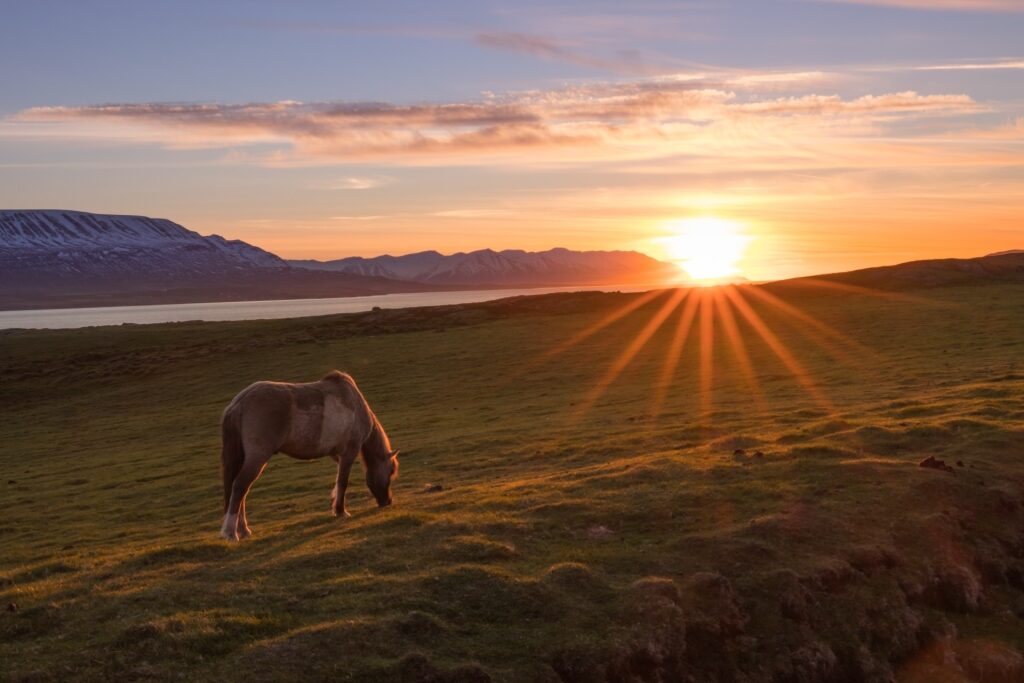
Akureyri
In the Arctic, the sun doesn’t set through summer. Iceland’s close proximity to the Arctic Circle means on June 21, upon the summer solstice, Iceland receives almost 24 hours of daylight.
The midnight sun doesn’t just appear on this one date in June. You can expect extended hours of daylight through the whole of June, which means shops, bars, restaurants, and attractions can stay open for longer.
Daylight hours last for 20 to 22 hours each day in June, with hours of darkness between 11:30 p.m. and 3:30 a.m. If you’re visiting in June, you might consider packing an eye mask to block out daylight during the night.
Whale Watching
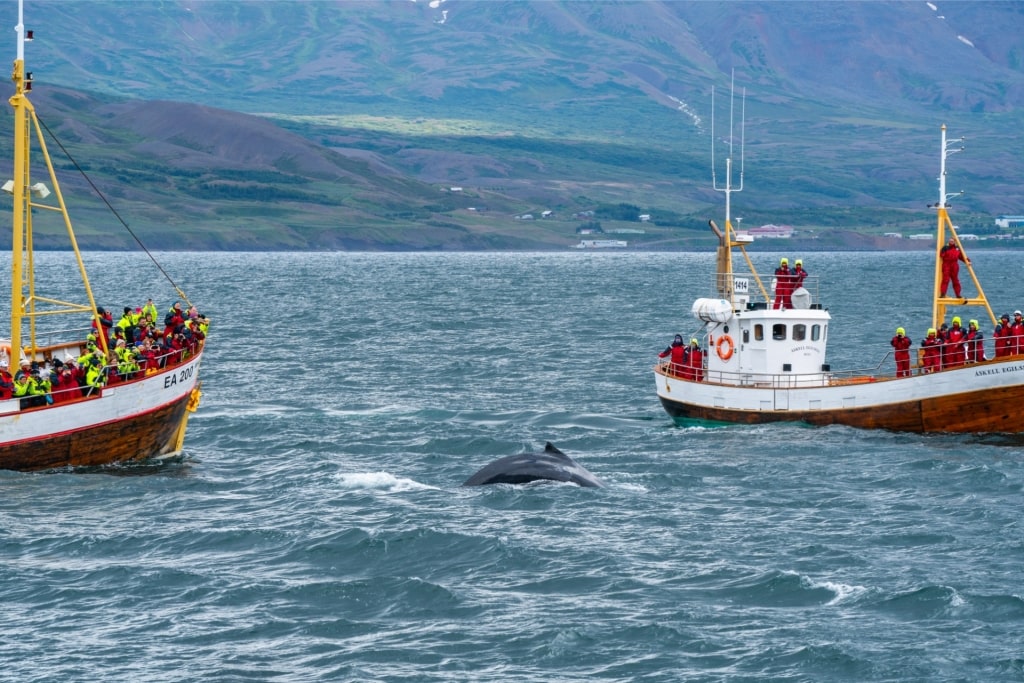
Whale watching in Akureyri
One of the best things to do in June in Iceland is go on an exhilarating whale watching trip. Join a trip in the north, ideally from Húsavík, near Akureyri, which is known as the whale-watching capital of Iceland.
Lying on Skjálfandi Bay, with an ecosystem rich in plankton and fish, Húsavík offers the best chance to see whales in Iceland, with trips available on wooden boats or a speedier RIB—a rigid inflatable boat.
The most common cetaceans in Skjálfandi Bay are humpback and minke whales, plus white-beaked dolphins and harbor porpoises. It’s also possible to spot the world’s largest animal, the blue whale, here. Pack binoculars to scan the ocean for humpbacks playfully tail slapping and breaching the water.
A trip to Húsavík’s two-story Whale Museum is a must do to learn more about the ecology of whales, whaling in Iceland, and the cetacean species found in the north of Iceland. Most impressive are the skeletons of nine whale species, including a humpback, sperm, and minke whale.
Puffin Season
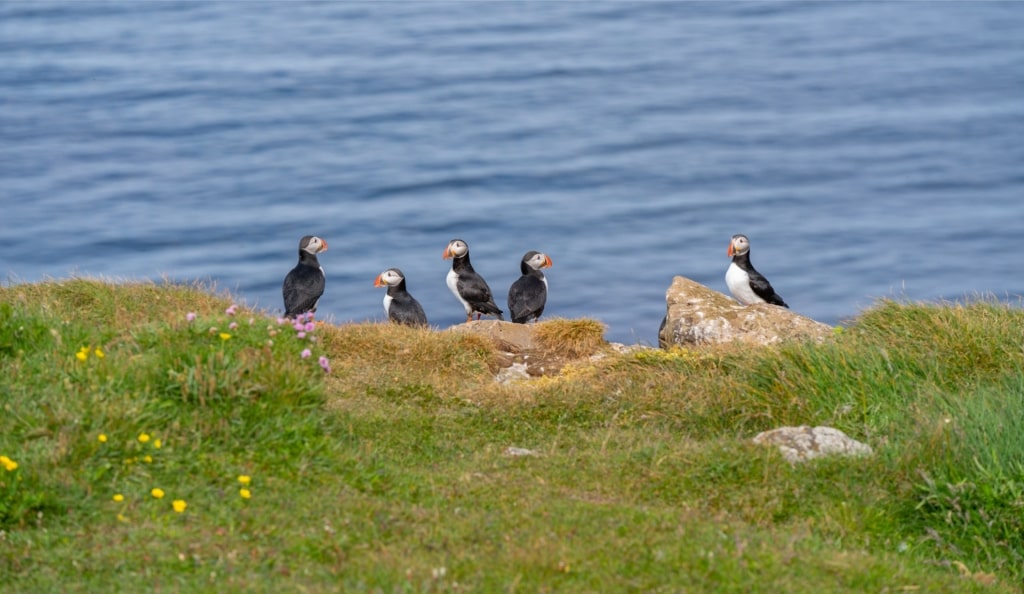
Puffins
Sixty percent of the world’s Atlantic puffins are found in Iceland during summertime, with Iceland’s puffin season running from April through early August. Their nesting season is from May to August, making June a fantastic time to see these adorable seabirds, identified by their jaunty orange beaks and white breasts.
Trips are available from the Old Harbour of Reykjavík to see puffin colonies on the uninhabited Lundey and Akurey islands. This is a great option if you have less time, since it takes just 15 minutes to reach the islands off the capital’s coast.
Take your binoculars and look out for cormorants, Arctic terns, northern fulmars, and black guillemots. The highlight, though, is seeing puffins clasping tiny translucent fish in their beaks as they frantically flap their small wings to get airborne.
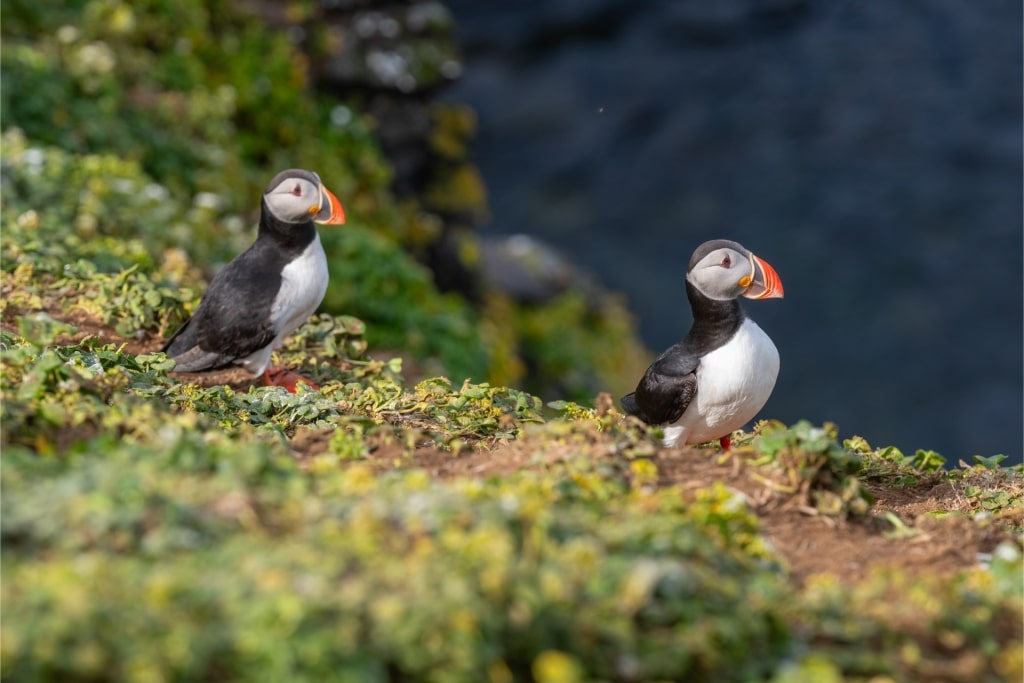
Puffins
There are opportunities to see puffins all around Iceland in June, including on the tiny island of Vigur, near Isafjordur in the Westfjords, which attracts around 100,000 puffins every year. Boat trips operate from Isafjordur to Vigur, weather permitting, during summer, offering the chance to see Vigur’s thousands of breeding eider ducks.
Spectacular Waterfalls
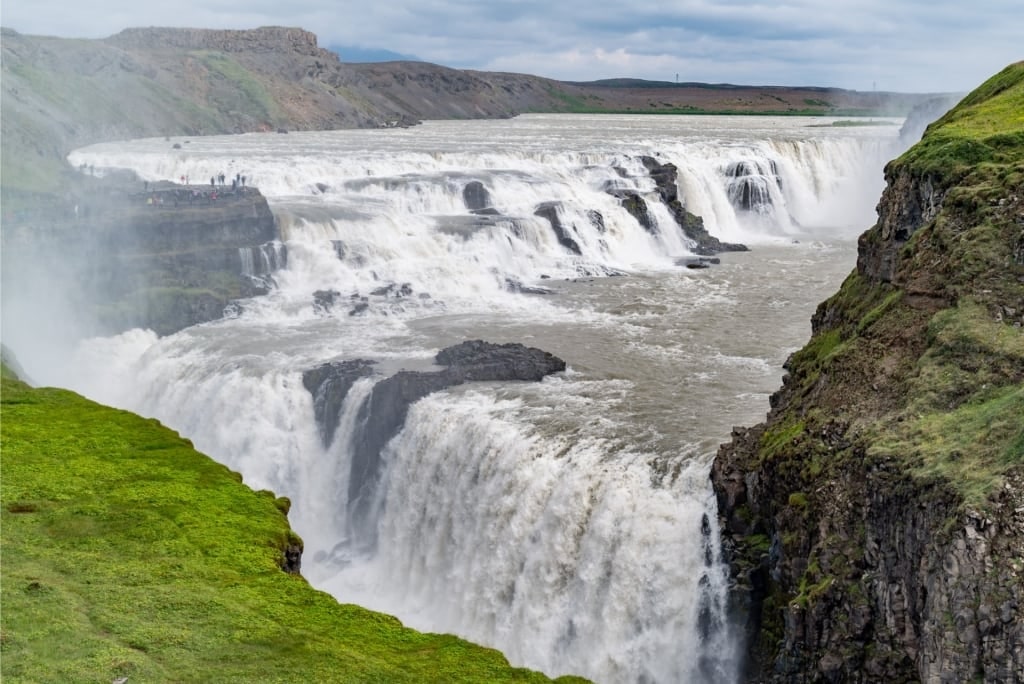
Gullfoss
As winter’s snow melts away, Iceland reveals thousands of spectacular waterfalls. One of the most powerful waterfalls in Iceland is Gullfoss, which translates as Golden Falls, around 72 miles from Reykjavik.
Located on Iceland’s Golden Circle route, along with Geysir Geothermal Area and Thingvellir National Park, the two-tier Gullfoss Waterfall is fed from the Langjökull glacier, with water flowing into the Hvita River before crashing 105 feet into a canyon.
From Gullfoss’s viewing platform, you can feel the powerful spray and watch as the foaming water drops first 36 feet, before cascading a further 69 feet.
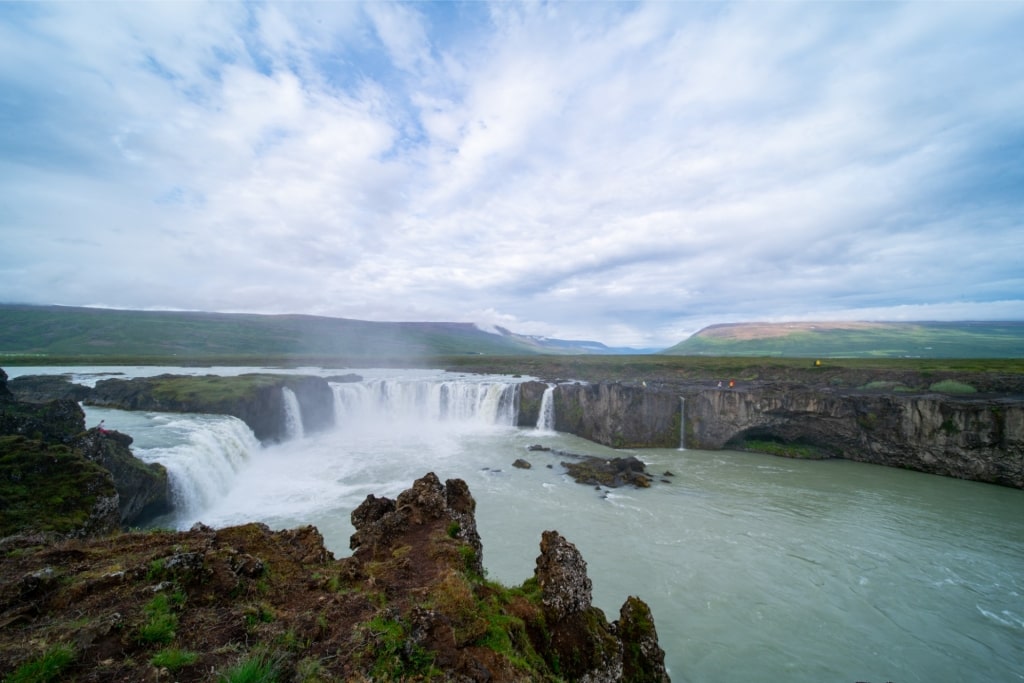
Godafoss
Godafoss, near Akureyri in north Iceland, is another breathtaking waterfall to visit in June. Fed from the river Skjálfandafljót, the crescent-shaped Godafoss drops 39 feet and is 98 feet wide, with trails and viewing platforms on both sides of the waterfall.
Dynjandi Waterfall in the faraway Westfords is easily reached by car or coach from Isafjordur in around 45 minutes. There’s a short hike that takes in six smaller waterfalls to reach the foot of the veiled Dynjandi, which fans out as it cascades around 325 feet down a mountain.
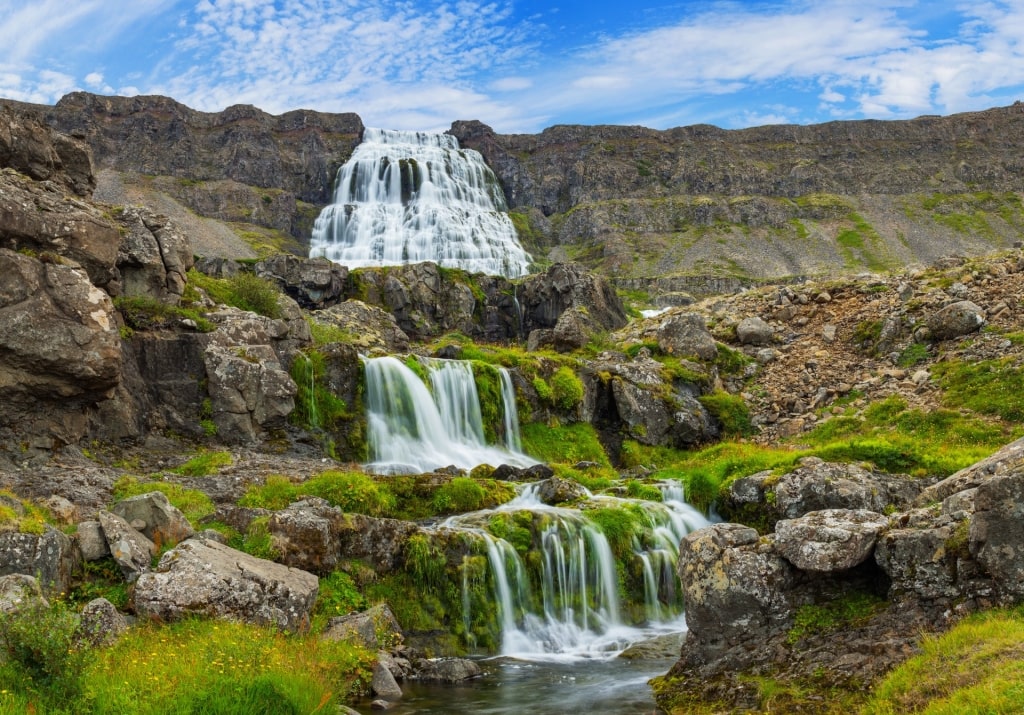
Dynjandi
Dynjandi begins around 98 feet wide at the top, doubling to almost 200 feet at its base, which takes around 15-20 minutes to walk to. The hike to Dynjandi is fairly easy, though some sections of the path are a little rocky. There’s seating along the route, where you break to admire the smaller waterfalls and Dynjandi in the distance.
Read: Best Things to Do in Iceland
Outdoor Bathing and Swimming
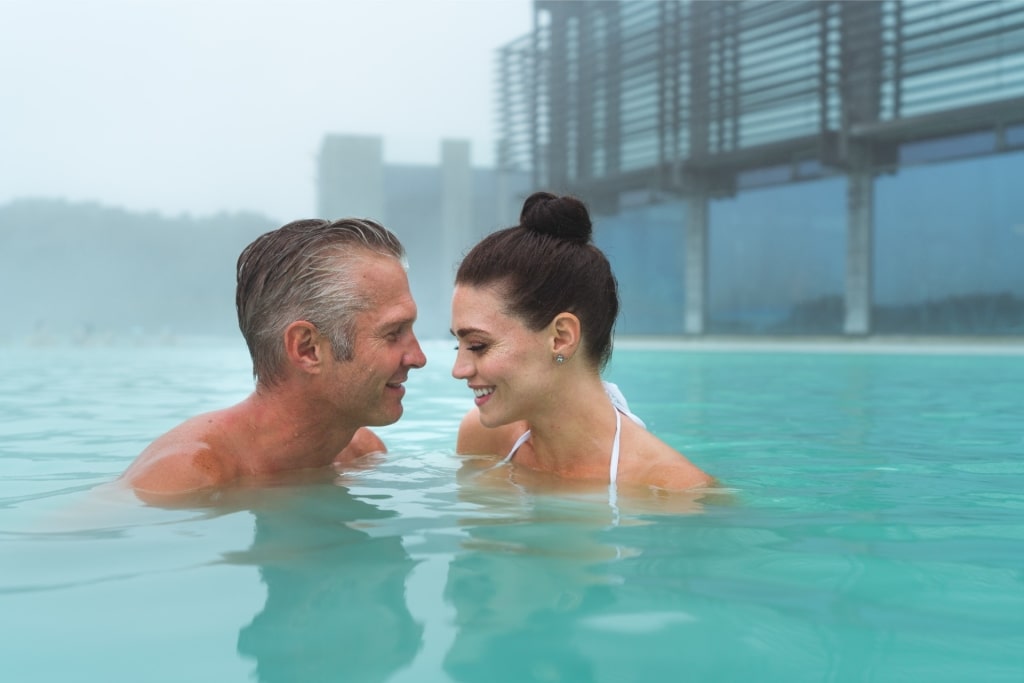
Blue Lagoon
Few experiences are as synonymous with Iceland as bathing outdoors in geothermally-heated pools. Sure, the water is so warm that you could do this year-round, but it’s far more enjoyable, and one of the best things to do in Iceland in June.
The most famous Icelandic hot spring is the Blue Lagoon, around a 50-minute drive from Reykjavik on the Reykjanes Peninsula in southwest Iceland. This region is well-known for its volcanic activity with vast, moss-covered lava fields surrounding the cloudy-blue waters of the Blue Lagoon.
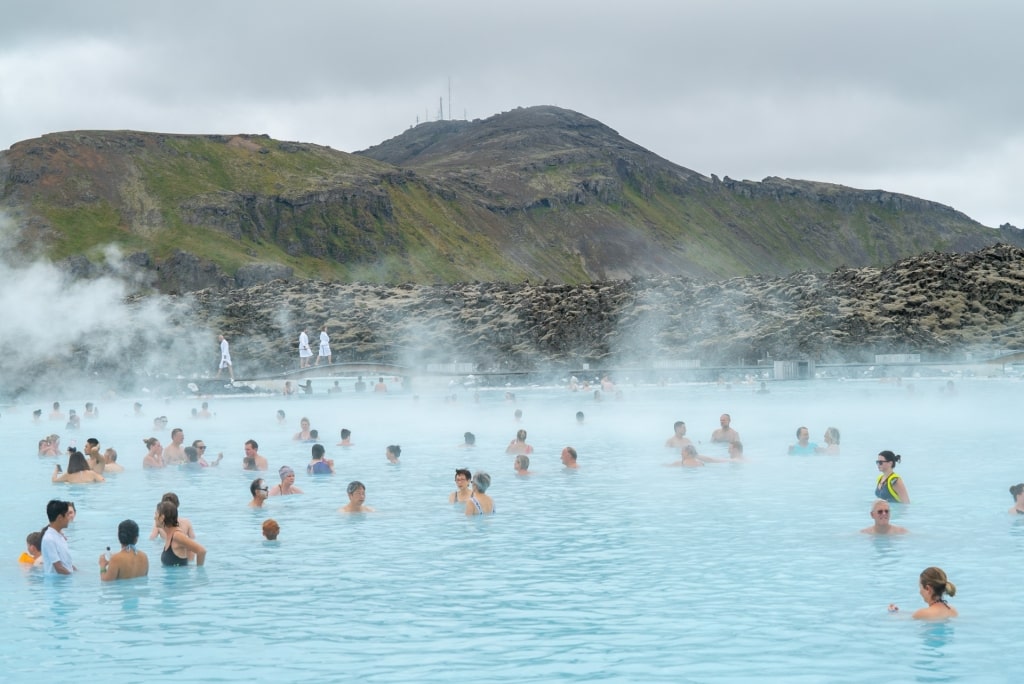
Blue Lagoon
Visitors arrive here to soak in the mineral-rich pool that is heated to around 99°F to 102°F by the nearby Svartsengi Geothermal Power Plant. A day visit to the Blue Lagoon includes access to the sauna, steam room, steam cave, mask bar, massage waterfall, and an in-water bar, with one drink—beer or soda—included per ticket holder.
Around 30 miles north of Reykjavik, on Iceland’s west coast, is Hvammsvik Hot Springs, a series of naturally-heated pools on the Hvalfjordur. The soothing water is heated to around 95°F to 104°F, though each pool varies in temperature.
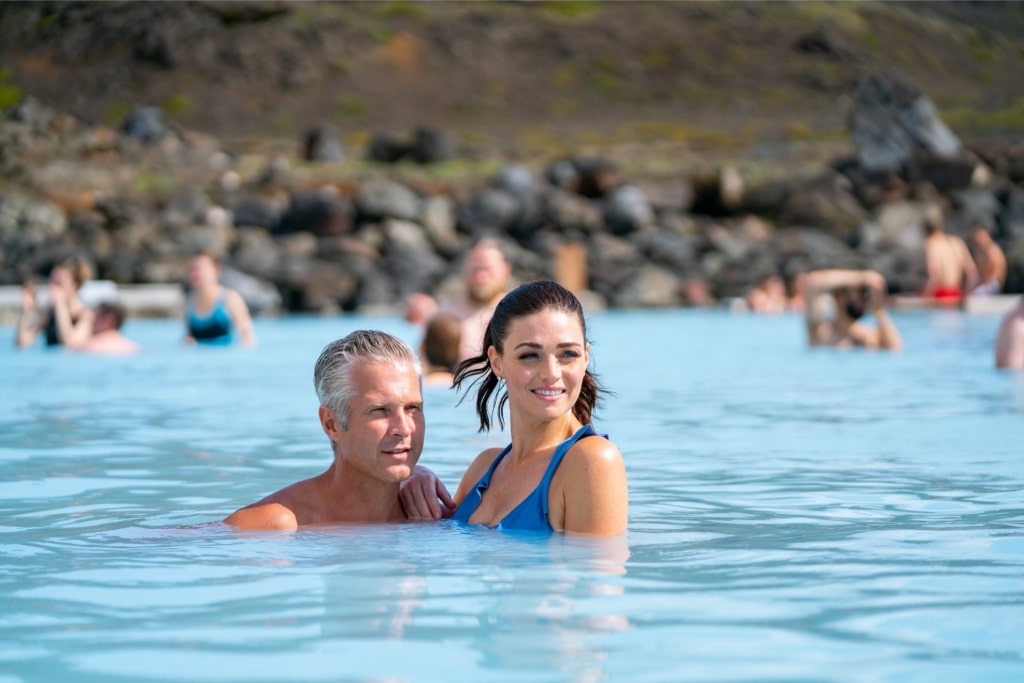
Mývatn Nature Baths
One of the best places to visit in Iceland is the Mývatn Nature Baths. It offers a similar experience to the Blue Lagoon, with steaming geothermally-heated pools of sublime, mineral-rich water that’s warmed to 100°F to 104°F.
Though most facilities include a towel, you’ll want to pack a bathing suit and flip flops to change into to enjoy Iceland’s legendary outdoor bathing spots.
Dramatic Beaches
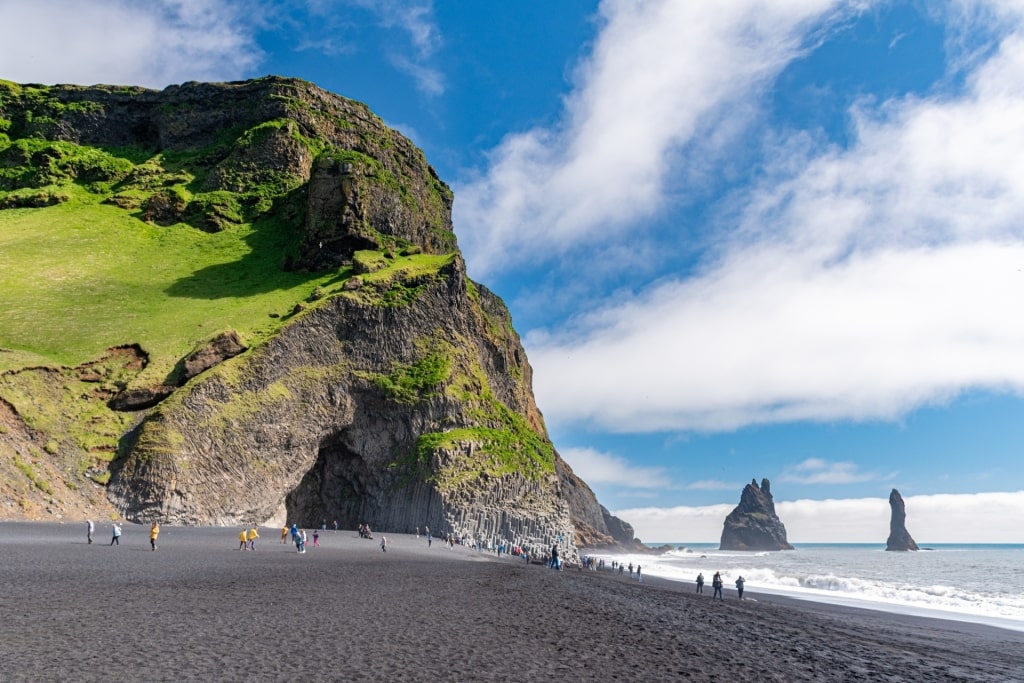
Reynisfjara Beach
From cinnamon-colored stretches to black-sand strips, Iceland has some of the world’s most dramatic beaches.
Reynisfjara Beach is one of the top Reykjavik day trips—just a two-and-a-half-hour drive to Iceland’s south coast. You’ll witness the volcanic beach, basalt columns, Hálsanefshellir sea cave, soaring sea stacks, and the powerful waves that crash onto the shore.
Waves have been recorded as high 120 feet—the height of a 10-story building—so it’s important to heed the safety information. Don’t swim here or get too close to where the waves break.
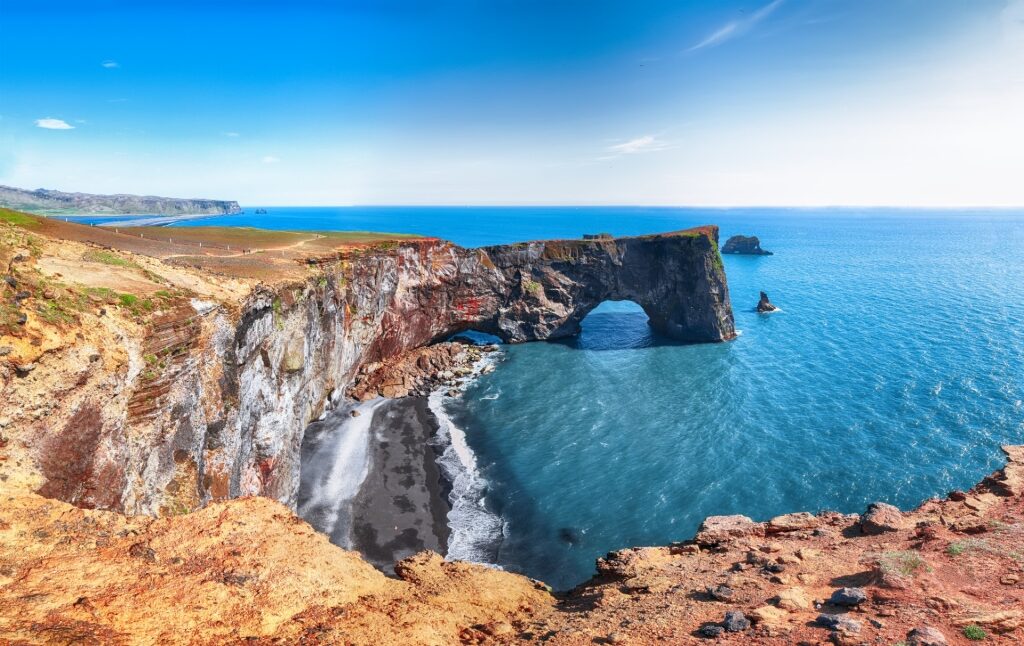
Dyrholaey
Dyrholaey is another top beach in Iceland—marking the southernmost point of the country—located to the west of Reynisfjara. Visitors are met with miles of unspoilt black sand, a pretty lighthouse, and sea arches to the far west of the beach.
On the Snæfellsnes Peninsula, in west Iceland, there are a string of silky dark-blond beaches, including Ytri Tunga Beach. Ytri Tunga is home to colonies of harbor and grey seals, with summer the best time to witness them basking on seaweed-covered rocks.
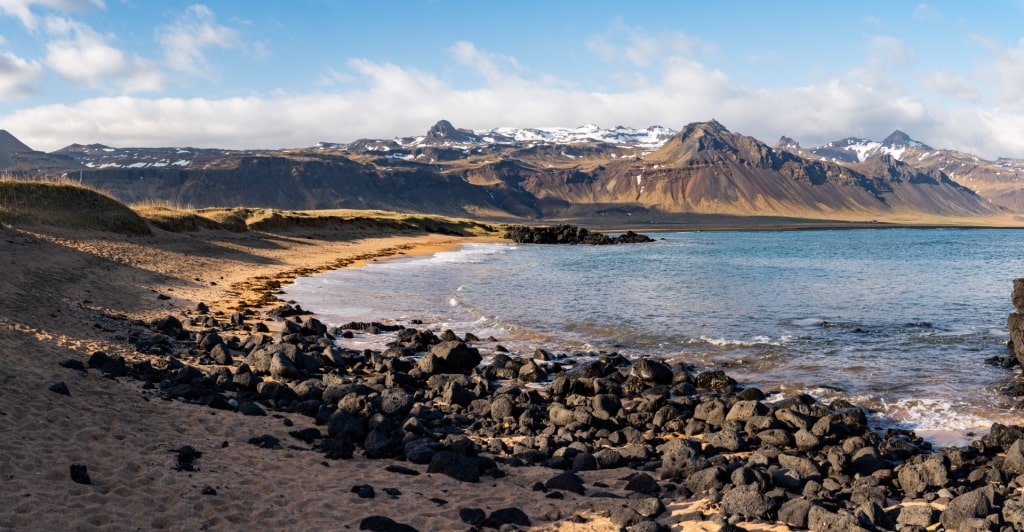
Búðir Beach
Next to the Búðahraun lava field, Búðir Beach offers a strip of golden sand dotted with black volcanic rock formations. Wildflowers bloom on the grassy banks around the beach, and there’s a handsome 19th-century church, Búðakirkja, within the lava field behind the beach.
In the Westfjords, Holt Beach is a beautiful, soft beach that curls into the fjord, surrounded by mountains. Holt Beach’s dune system is home to nesting eider ducks in early summer, with visitors required to stay clear of the nesting sites from April 15 to July 14.
Spring and Summer Flora
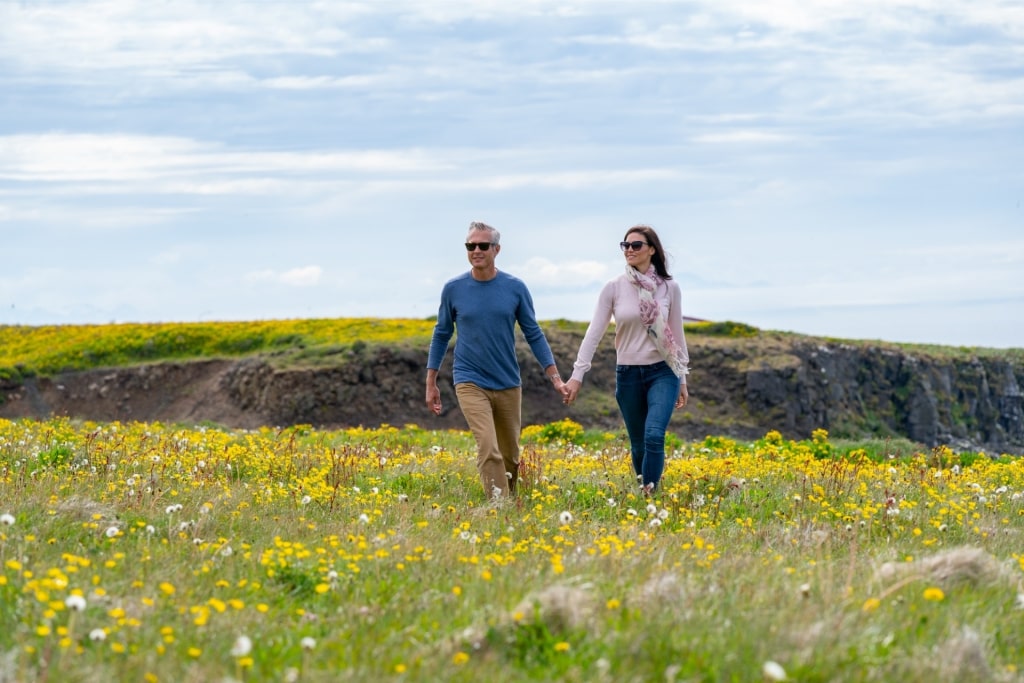
Grimsey Island
Iceland might be known for its cinematic glaciers, volcanoes, and waterfalls, but in late spring and early summer, melting snow reveals green meadows carpeted in wildflowers, including attractive, purple-hued lupine.
Though lupine was only introduced to Iceland from North America in 1945, this perennial plant spread all over the country, including near Reynisfjara Beach and the village of Vík, and in Thingvellir National Park, a sea of mauve in the summer months..
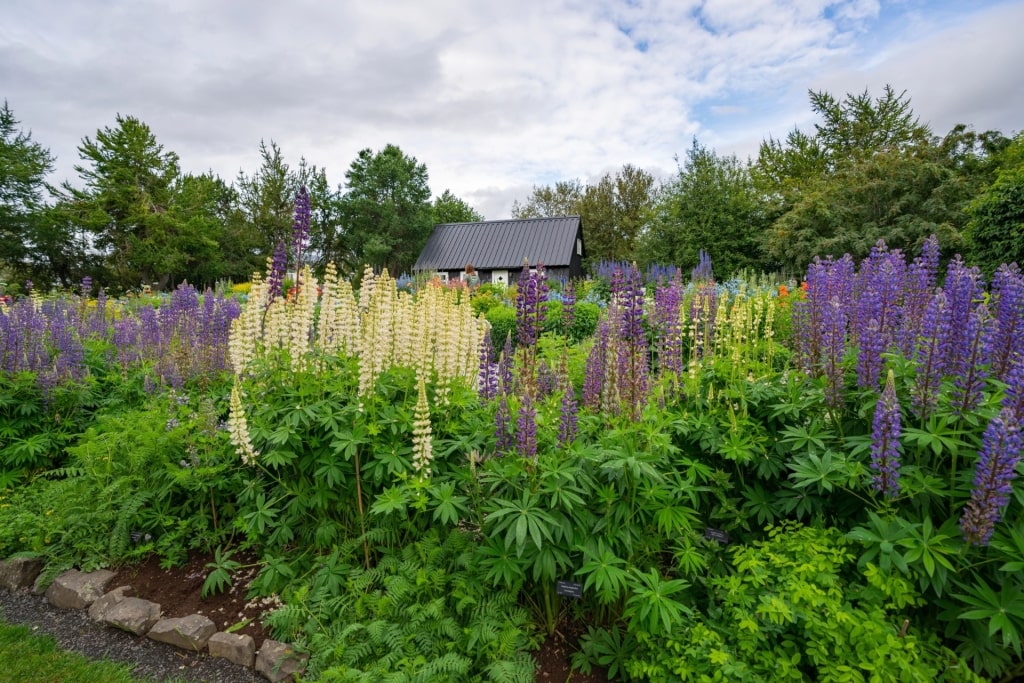
Akureyri Botanical Garden
Visit the Akureyri Botanical Garden, located just below the Arctic Circle in northern Iceland to see a raft of well-manicured gardens. This peaceful setting is surrounded by mountains and has sections dedicated to Icelandic flora, such as Arctic thyme, sheep sorrel, and angelica.
The fragrant Reykjavík Botanic Garden is an open-air museum of around 3,000 plant species divided into eight collections, including roses, herbs and vegetables, and international perennial alpine plants.
Peaceful Fjords
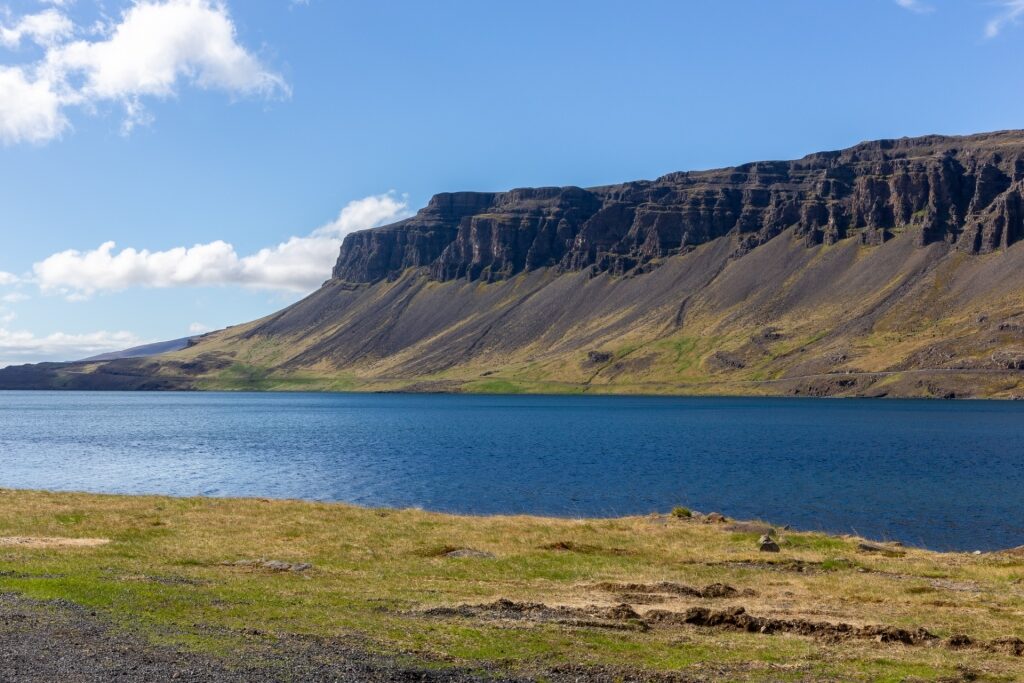
Hvalfjordur
Iceland’s coastline is defined by more than 100 deep, U-shaped fjords that were formed during the last ice age, often flanked by soaring mountains, with waterfalls, wild meadows, and traditional villages.
Two of the easiest to reach fjords in Iceland are Hvalfjordur and Borgarfjordur, near Reykjavik. Hvalfjordur is 19 miles long and is the location of the first Icelandic-owned whaling station that opened in 1948 and is still in use today.
In June, fjords are beautifully calm and offer ideal conditions for kayaking. Kayaking is by far one of the best things to do in Iceland in June, giving travelers the chance to get up close to some of the world’s most beautiful fjords.
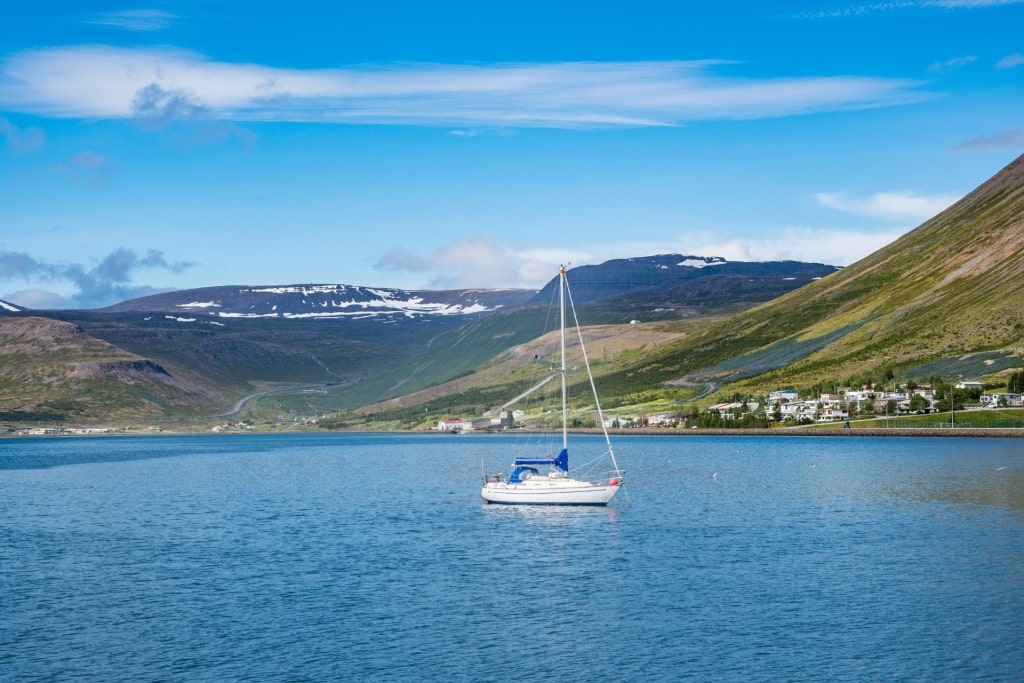
Skutulsfjörður
Join a guided kayaking trip on the serene Skutulsfjörður fjord in the Westfjords from Isafjordur. It’s not necessary to be an experienced or expert kayaker, but it’s important you can swim and you have at least a basic ability to paddle.
You could also rent a kayak from the village of Hjalteyri, a few miles from Akureyri, to paddle on the gorgeous Eyjafjörður. Both locations offer the chance to spot seals, dolphins, and a rich variety of bird life as you gently paddle through the still water.
When kayaking in Iceland, wear a waterproof outer layer, pack a waterproof phone or camera case, and carry snacks and water.
Read: Iceland Travel Tips
Coastal Hikes
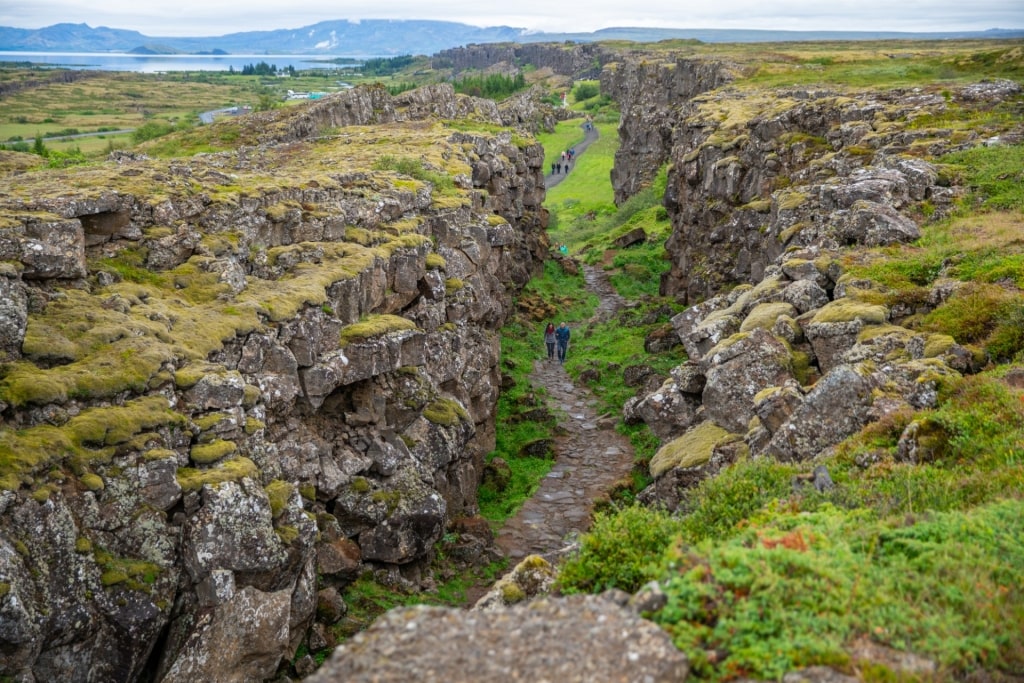
Thingvellir National Park
June presents one of the best times of year to explore Iceland’s majestic coastline on an invigorating hike. On the lesser-visited east coast, Skálanes, near Seyðisfjörður, is a remarkable nature reserve encompassing coastal cliffs and a vast spectrum of wild flora and fauna that thrives during summer in Iceland.
Fields of vividly colored purple lupine bloom in June and July, while the towering cliffs are home to thousands of seabirds, including nesting eider ducks and Arctic terns. Follow the hiking route to Skálanes along from the Seyðisfjörður fjord from the Austdalsá river parking lot. This easy hike is just under three miles and takes in the dramatic sea cliffs and gorgeous wildflowers of the nature reserve.
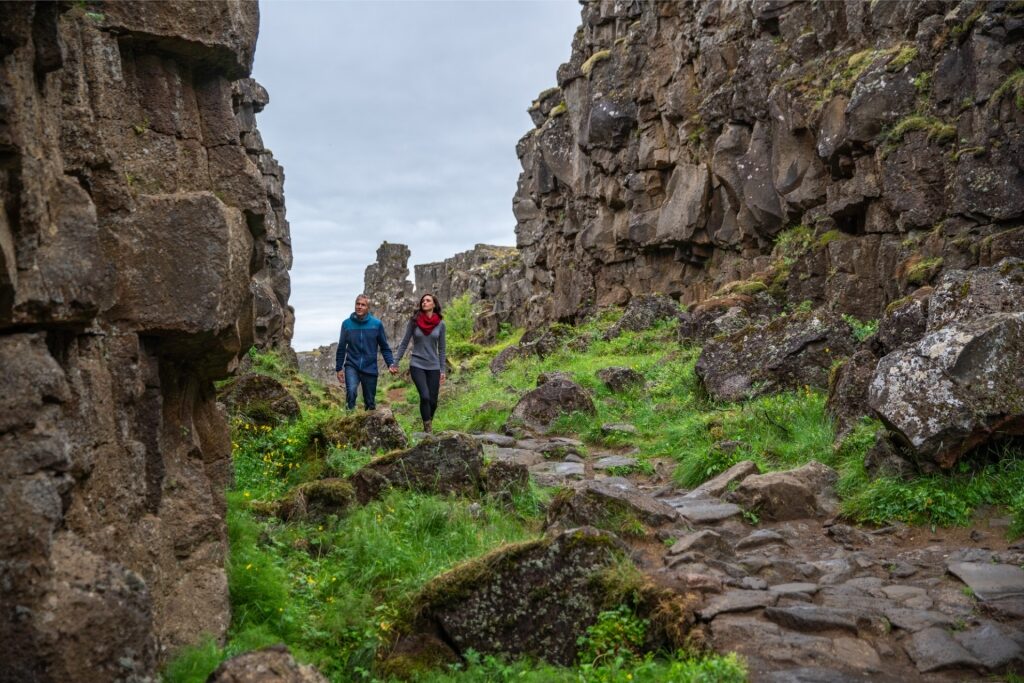
Thingvellir National Park
Thingvellir National Park—the location of Iceland’s first parliament and a UNESCO World Heritage site—offers plenty of hiking options, with several signposted routes that take in the former open-air assembly, Öxarárfoss waterfall, and abandoned farms.
When visiting Thingvellir, around a 45-minute drive from Reykjavík, start at the visitor center for information on the routes and to learn more about this extraordinary rift valley.
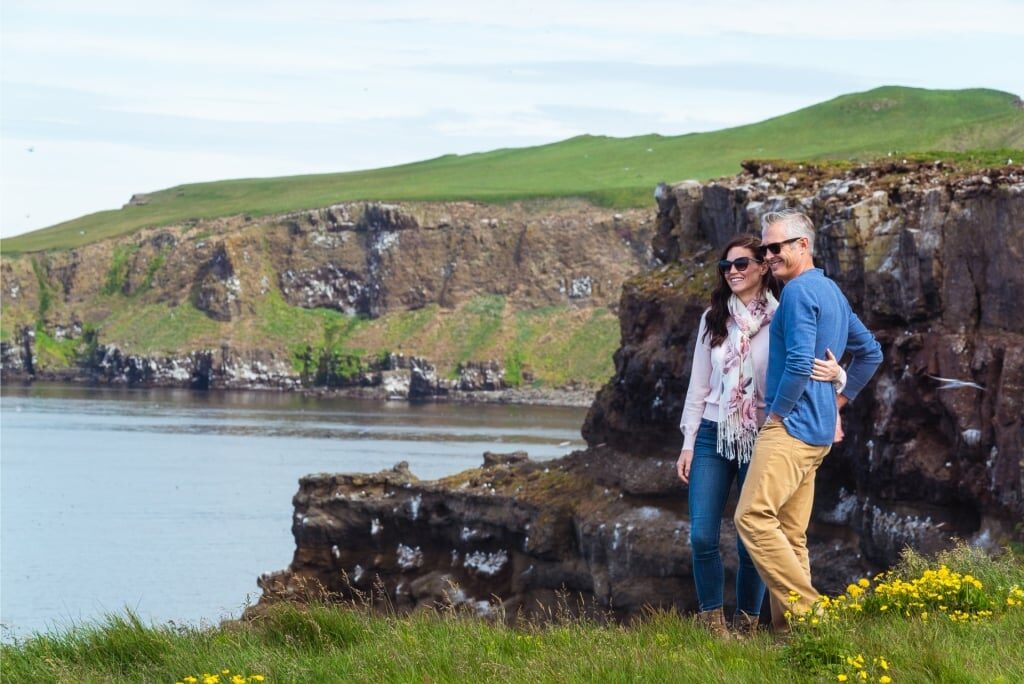
Grimsey Island
Summer is a fantastic time to hike on the remote Grimsey Island, around 25 miles off the north coast, on the edge of the Arctic Circle.
To reach green-covered Grimsey, take a thrilling polar flight before hiking to the Orbis et Globus, the Arctic Circle marker on the north of the island. Look for wild horses, Atlantic puffins, and Arctic terns as you trek this 3.7-mile roundtrip route.
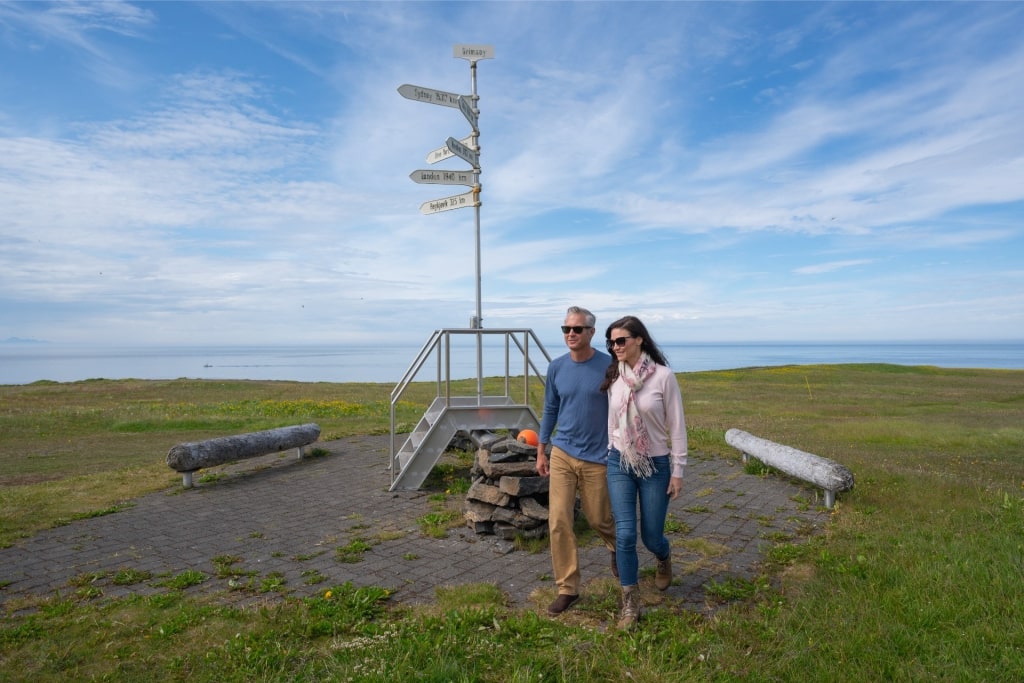
Grimsey Island
Explore the breathtaking landscapes of the Land of Fire and Ice in midsummer. Browse Celebrity Cruises’ cruises to Iceland and plan your next thrilling vacation.
